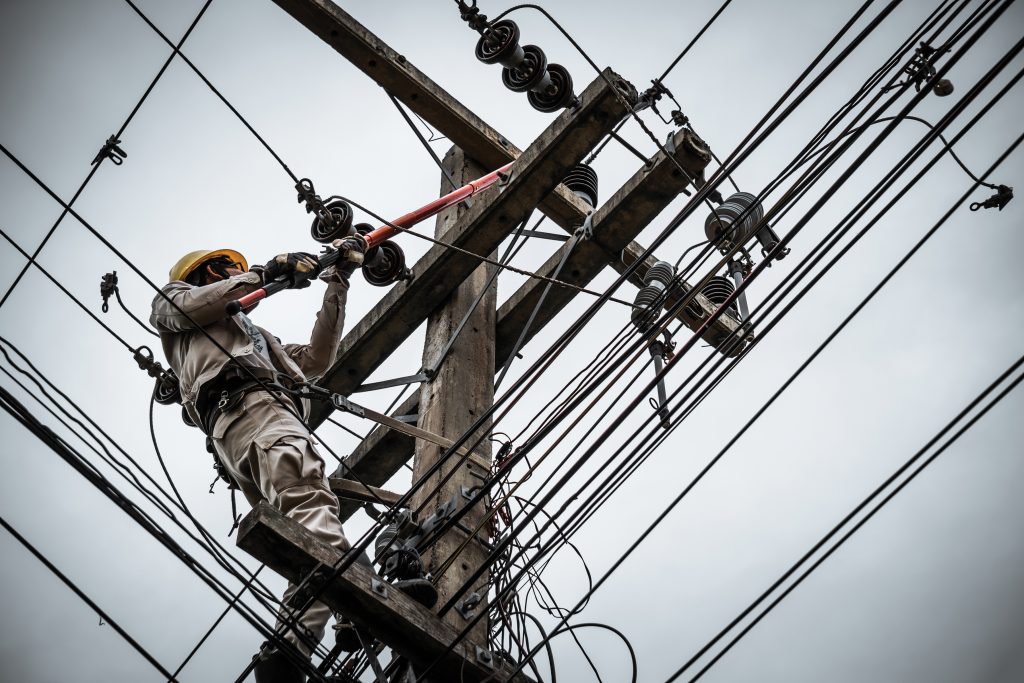
Keeping the lights on through COVID-19
December 3, 2020
By
David Johnston
Pandemic lockdowns not an option in electrical utility sector

Unknown to most Canadians, thousands of power-line technicians across Canada are doing high-risk work 24/7, writes David Johnston. (3asy60lf/Adobe Stock)
COVID-19 has illustrated the need for qualified and competent occupational health and safety (OH&S) professionals to manage OH&S hazards and risks.
The electrical utility sector has clearly demonstrated that qualified and competent OH&S pros significantly reduce or eliminate risks and hazards through their application of principles, theories, knowledge and experience in the workplace.
Every day across Canada, hundreds of components in the electrical grid can and do fail. Transformers burn out, cables fault, wires come down.
To the average person, this usually goes unnoticed due to the redundancy built into the grid.
Unknown to most Canadians, thousands of power-line technicians across Canada are doing high-risk work 24/7 making sure this essential service is provided to all customers without interruption.
Advertisement
During the pandemic, as always, hospitals, airports, banks and industry are continuing operations without interruption, while hundreds of thousands of Canadians rely on electricity to stay safe by working at home.
Lockdowns not an option
When the COVID-19 pandemic was declared and lockdowns started in March, many organizations shut down and sent their employees to work from home to minimize the risk.
This was not an option in the electrical utility sector.
Adding the risk of COVID-19 to an already high-risk industry presented a new challenge to safety professionals.
No electrical utility has had to curtail or stop work due to occupational COVID-19 infections, attesting to the effectiveness of the risk mitigation measures put in place by OH&S pros.
In some ways, it is fortunate that the sector is a high-risk occupation because the industry has long recognized the value of employing competent, qualified OH&S pros, many of whom hold the CRSP certification.
Prior to the pandemic, many electrical utilities had well-established safety management systems. This provided the framework to facilitate an effective response to COVID-19.
In fact, members of the Canadian Electricity Association — which includes most Canadian electrical utilities — are required to establish a safety management system aligned with ISO 45001.
Many of the industry’s professionals had earlier planned for the possibility of a pandemic and had integrated these plans into existing OH&S programs.
For example, respiratory protection programs ensured employees were regularly fit tested in sufficient numbers and resources to conduct testing were maintained in-house.
Pivoting as a result of COVID-19
When the lockdowns started in March, the term “pivot” has been used to describe how we reacted.
Policy, procedures, programs, training materials and communications to address the risk the pandemic posed to the industry were developed overnight by OH&S pros and regularly updated as we learned more about the virus.
OH&S professionals took the lead in explaining the difference between a mask and a respirator, the importance of adhering to the hierarchy of controls and not relying on the last and least effective barrier — PPE, and building the “precautionary principle” into all decision making that affected employee health and safety.
The public began using terms like “PPE” and “N95” while health and safety became the No. 1 concern of many Canadians, illustrating the deep ongoing concern many Canadians have for this subject.
Satisfied with safety efforts
Despite the concern of the average Canadian, many electrical utility employees are satisfied with the steps taken by their respective companies to manage the COVID-19 risk.
OH&S professionals’ leadership in the electrical sector has ensured that employee health and safety has been effectively protected from COVID-19 infections and this has prevented the potential crisis of nation-wide power outages.
We know through this example that competent qualified OH&S professionals are key to minimizing occupational health and safety risks, including COVID-19.
All that said, the time has come for governments and regulators to formally recognize the safety profession and the value it adds to society.
In some jurisdictions, hairdressers, home inspectors and human resources professionals have title protection to protect the public from scammers and incompetent persons, yet there is no such protection of the public from unqualified and incompetent persons claiming to be an OH&S professional.
We can’t wait for another pandemic to learn this lesson again.
David Johnston is the president and CEO of the Board of Canadian Registered Safety Professionals in Mississauga, Ont.